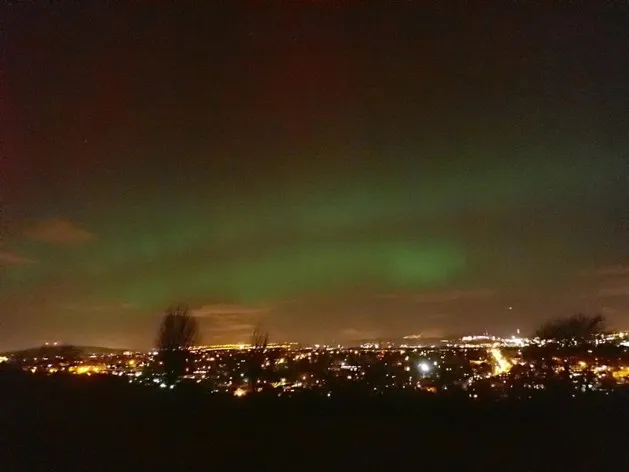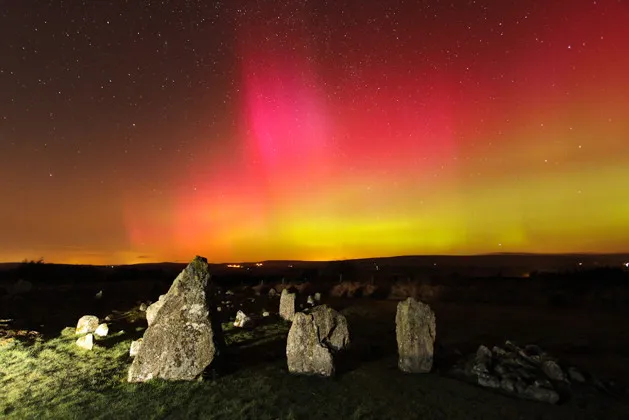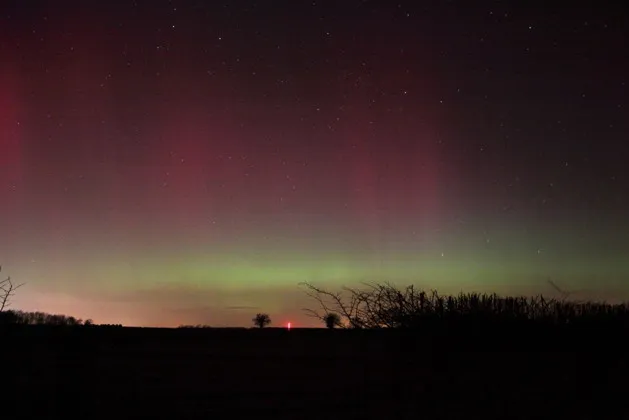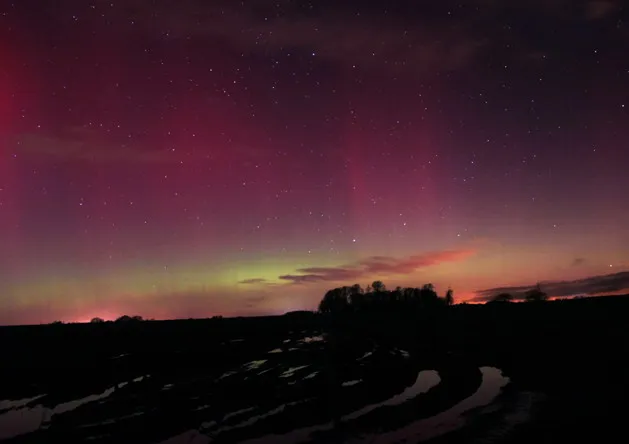Those lucky enough to see last night's dramatic auroral apparition reported a dynamic display of red auroral rays with green arcs and patches.Further north, closer to the Arctic circle where auroral activity is more intense, the night skies hosted higher levels of activity.
Here, fast moving displays with many defined structures were described by observers.
Speaking on Radio 4's Today programme, The Sky at Night's Dr Lucie Green, a solar scientist at Mullard Space Science Laboratory, said: "I think it's maybe the best event for about 10 years.
"When we were watching the Sun on the 25 February we saw that a large and fast eruption leapt from the Sun's atmosphere and the models predicted that we would probably get a glancing blow from this eruption."
The eruption on 25 February was a coronal mass ejection and an after effect of an X4.9-class solar flare.
Travelling the 150 million km between the Earth and the Sun in just two days, the charged particles in the eruption became trapped in Earth's magnetic field.
They were then fired down the magnetic field lines onto the gases in our atmosphere at high speed, smashing into the neutral particles here.
Excited by this extra energy, these neutral particles in our atmospheric gases emitted light, creating the auroral display that so many enjoyed last night.





